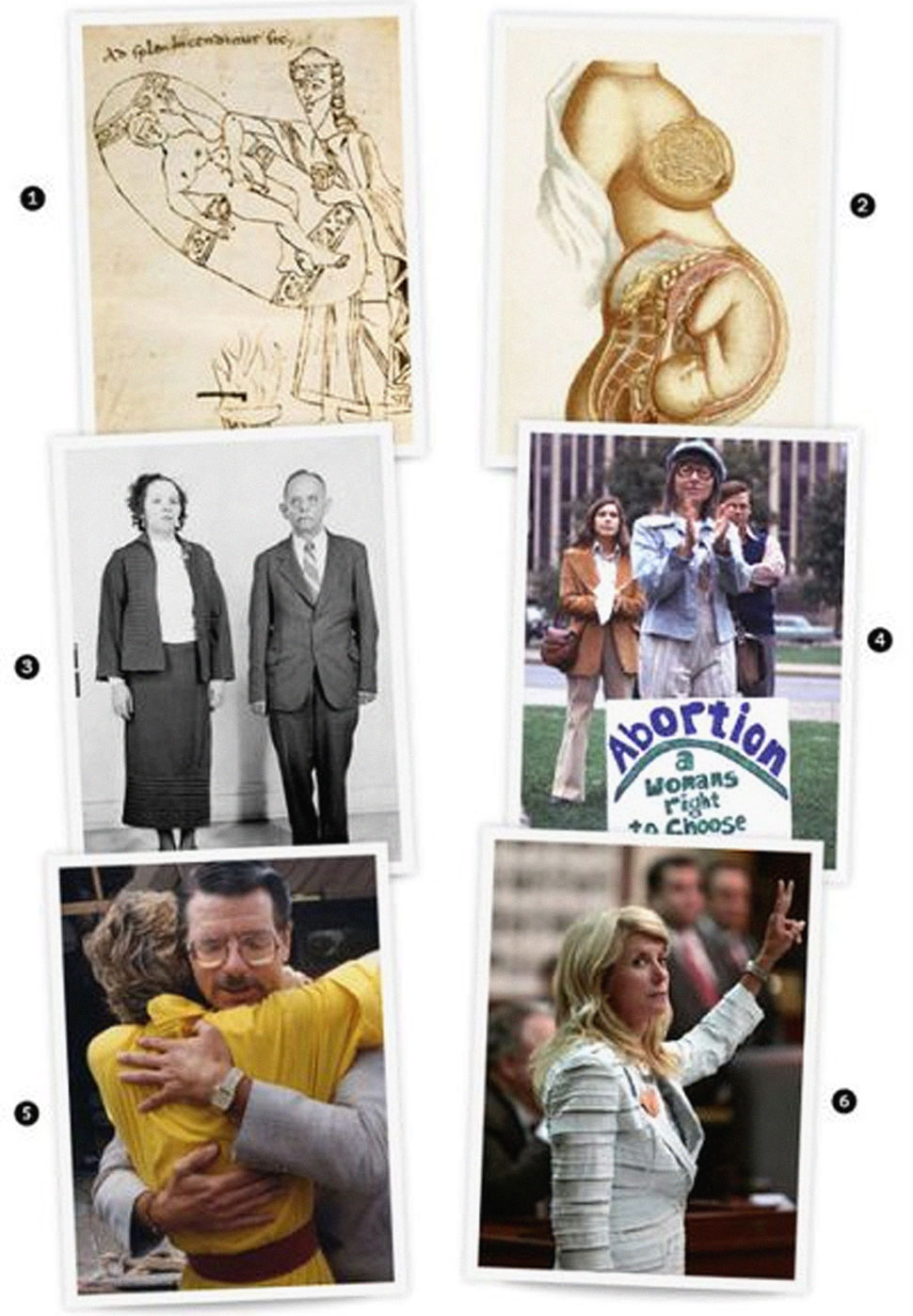The History of Abortion Laws: Roe v. Wade Anniversary
For the 41st anniversary of Roe v. Wade, we're going back — way back, into the history of abortion laws.

1. The Beginnings—Ancient Era to 1800s
From the Egyptians, Greeks, and Romans, to colonial America, the practice of abortion has been around for centuries (although the stance varies). According to the BBC's Historical Attitudes to Abortion, the Romans and Greeks weren't opposed to abortion, as their concerns weren't for the unborn, but rather objected because they felt the father potentially didn't have a say in the matter. And, in colonial America, abortions were common but kept secret due to strict laws prohibiting premarital sex.
2. The Shift—Early, Mid to Late 1800s
After the turn of the 19th century, states began regulating abortion with poison control laws passed in the 1820s and 1830s. The legislation was intended to curb practices that included "abortifacients" (a substance that induces abortions), according to i09.com. By the mid-1850s, states started to criminalize abortion — one of the reasons included the "fear that the population would be dominated by the children of newly arriving immigrants, whose birth rates were higher than those of 'native' Anglo-Saxon women," according to National Abortion Federation. Regardless, the abortion business was in full bloom, and according to The Atlantic, "some late-nineteenth-century observers estimated that two million were performed annually (which would mean that in Victorian America the number of abortions per capita was seven or eight times as high as it is today [1997])."
One of the most famous abortionists of the time was Madame Restell who practiced in New York City during the mid-1800s. British born as Ann Trow, she moved to New York City in 1831, joined her husband in his business of creating concoctions that prevented conception and induced abortion, and became Madame Restell according to Britannica.com. Overtime, Restell amassed a fortune of over $1.5 million from practicing abortion and operated out her Fifth Avenue Townhouse, according to New York Magazine. In 1847, she was arrested and tried for accusations of performing an abortion and served a year in jail. By the late 1870s, the pursuit for Restell to cease offering (and cashing in on) abortions intensified, as the moral organization New York Society for the Suppression of Vice came to power. The leader of the organization, Andrew Comstack, posed as a man who impregnated his mistress, and tricked Restell into selling him an abortifacient. Awaiting trial, Restell committed suicide.
3. The Crack Down—1930s and 1940s
Abortion began to move from private offices and homes, to clinics and hospitals, marking a new turn in the practice of abortion, according to When Abortion Was a Crime: Women, Medicine, and Law in the United States, 1867-1973. Yet, strict regulatory methods to control abortion were introduced by the 1940s and continued until 1973. Many doctors and nurses were jailed for performing abortions or running clinics.
Pictured above is a doctor and a nurse who were arrested for performing abortions in New Jersey in 1936.
4. The Landmark—1973
Roe v. Wade became one of the most controversial Supreme Court decisions to date when the court ruled that it was unconstitutional for a state to ban abortions during the first trimester of pregnancy (additional rulings are outlined for second and third trimesters), as it infringed on a woman's constitutional right to privacy, according to PlannedParenthood.com. The Roe v. Wade case was brought to court on behalf of Norma McCorvey who went by the pseudonym "Jane Roe," in which she challenged the abortion laws in Texas. McCorvey's appeal made it to the Supreme Court in 1973. Represented by Sarah Weddington, they argued that the state law infringed on a women's right to privacy.
5. The Clinic Violence—1990s
Abortion clinics, including Planned Parenthood, experienced a string of attacks throughout the '90s. In December of 1994, a gunman killed two people in a Brookline, Massachusetts clinic, according to The New York Times. In July of 1994, Reverend Paul Jennings Hill killed Dr. John Britton and clinic escort, James Barret (scene pictured above), according to The Washington Post. In the late '90s, abortion clinics from Montana, Florida, and New Hampshire were bombed and set on fire as the abortion debate continued.
Get exclusive access to fashion and beauty trends, hot-off-the-press celebrity news, and more.
6. The Fillibuster—2013
According to The Guttmacher Institute, more abortion restrictions were enacted between 2011 and 2013 than in the entire previous decade, making the past 12 months a rough year for abortion rights. However, it was also the year the U.S. witnessed a filibuster fought in pink sneakers. In June, State Senator Wendy Davis (D) held an 11-hour filibuster against Texas bill HB2. The legislation, which was eventually signed into law by Governor Rick Perry (R), placed harsh restrictions on providers and banned abortions after 20 weeks of pregnancy. As a result, one-third of the abortion clinics in the state shut their doors when the law was enacted in November 2013. Several states including North Dakota, Ohio, North Carolina, and Michigan also enacted anti-abortion laws in the past year.
More from Marie Claire:
How Does The Texas Abortion Debate Affect Women In Texas? We Asked an Expert
Woman Wins Historical Tennis Match, Gets Asked Sexist Interview Question
Time Magazine's Yawwwn-Worthy Yet Questionable Magazine Cover